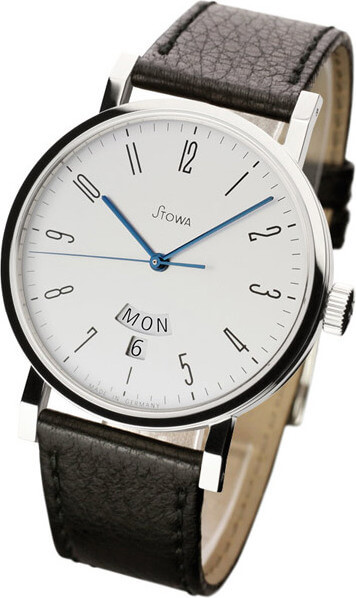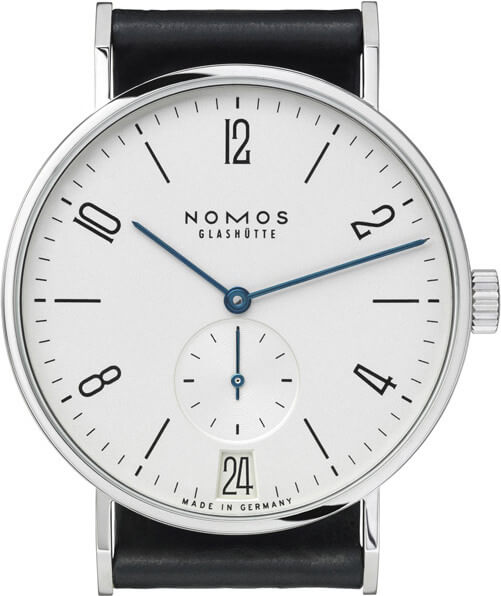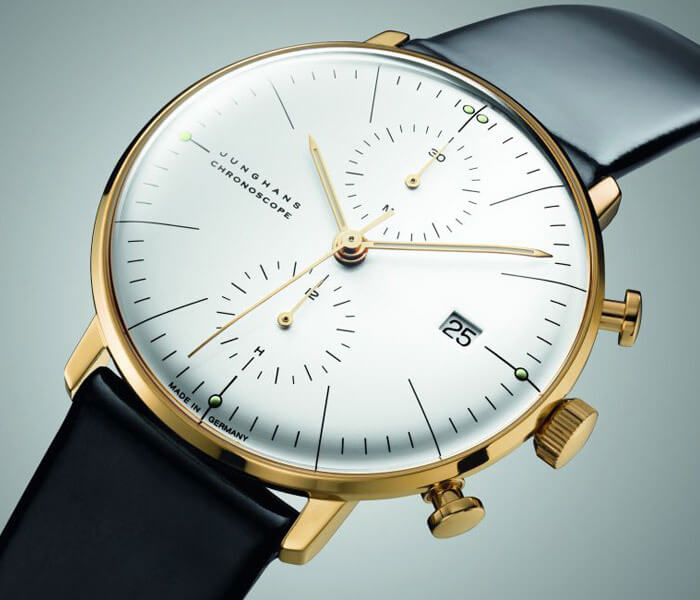While Junghans, Nomos and Stowa may not be the most familiar names among fans of mechanical horology, they are all contributing to the revival of German watchmaking, with marked references to the Bauhaus aesthetic. Walter Gropius founded the Bauhaus school of arts and crafts as the Staatliches Bauhaus in 1919, in Weimar, Germany. Despite a short-lived existence – it was closed down by the Nazis in 1933 – Bauhaus was hugely influential in disciplines as diverse as architecture, design, fashion, painting, photography and the plastic arts.
Form follows function
Bauhaus artists set out to integrate the principles of modern mass production and prefabricated buildings. Aesthetic must exist alongside technique, fine arts alongside industry. Artist and artisan form one; man works with machine. In Gropius’ words: “The nature of an object is determined by what it does.” This precept, often abbreviated to the tenet “form follows function,” took root in the development of contemporary society. Watchmaking too has integrated the teachings of Bauhaus, in particular in Germany, perhaps because of shared origins.
Established in 1861 in Schramberg in the heart of the Black Forest, and official timekeeper for the 1972 Munich Olympics, in the 1960s Junghans worked hand in hand with the Swiss architect Max Bill, one of the leading figures of Bauhaus. For its 150th anniversary this year, the company, which is now owned by the Steims, a family of industrialists also from Schramberg, has breathed new life into iconic models whose Deutsch Eleganz hasn’t aged a day. For example, the Max Bill Automatic with numerals or hour markers features a superbly simple 38mm dial with a domed Plexiglas crystal, and an ETA 2824-2 automatic movement.
Too many functions, too little sobriety
Nomos lays claim to the same pared-down and ultra contemporary aesthetic. The name goes back to the early 20th century. However, the present-day Nomos was established by Roland Schwertner in 1990 in Glashütte, the cradle of German watchmaking. Suzanne Günther was first to introduce the Bauhaus style to Nomos watches. Her legacy has been taken up today by the Hamburg industrial designer Karin Sieber. In its early days, Nomos worked with calibres that were based on the ETA Peseux 7001 with a 45-hour power reserve. Since 2005, however, the company has spared no effort in developing its own movements and now boasts no fewer than seven in-house calibres. That they should be named after letters of the Greek alphabet – Alpha, Beta, Gamma, Delta, Epsilon, Zeta and Xi – is no coincidence, as Nomos is Greek for regularity and order. Since 2007, Nomos has worked closely with Wempe, the prestigious German watch and jeweller retailer, to produce, among others, the limited-edition Nomos Tangente Wempe for the jeweller’s 125th anniversary.
Stowa is another name in the small circle of German watchmakers who are perpetuating the Bauhaus aesthetic, in particular with its Antea collection whose inspiration comes from one of the brand’s 1930s models. Founded by Walter Storz in 1927, Stowa remains true to a style which, in the words of Jörg Schauer, owner of the brand since 1996, “does not lend itself to all kinds of complication. Too many functions would take away from the sobriety of the design.” The Antea 390 Day-Date, presented at this year’s Baselworld, is a perfect illustration. Equipped with an ETA 2836-2 automatic movement with day and date windows at 6 o’clock, it is a pure interpretation of the Bauhaus functional aesthetic.

Patek Philippe puts Bauhaus principles into action
Certain watchmakers across the border from Germany have taken the same tack, and claim Bauhaus affiliations for models that owe much to a style Hergé would later pioneer in his ligne claire. First up are Alain Silberstein and his Krono Bauhaus, as well as Zeno with its Bauhaus 3532. Patek Philippe is also in the running. Estelle Fallet, curator of the Musée d’Horlogerie et de l’Émaillerie in Geneva, singles out the Calatrava for having “applied the principles of Bauhaus to watch design.” In the seventy years since it first appeared, in 1932, the Calatrava has seen many changes but has never departed from its original discretion and purity of line.
This year, Patek Philippe presents the Ref. 5235 Annual Calendar Regulator which ushers in a number of novel features for the Manufacture. It is the first Patek Philippe wristwatch with a regulator dial, featuring a sweep minute hand, a subsidiary hour dial at 12 o’clock and small seconds at 6 o’clock; the first ultra-thin automatic movement with a micro-rotor, and the first base calibre to incorporate Silinvar® components: the escape wheel, lever and balance spring are all made from this innovative silicon-based material. Nor is it by chance that Patek has housed these many firsts inside a Calatrava. In its own words: “The classic three-part case ensemble with the bezel, the band and the back in 18K white gold is a prime example of the Bauhaus philosophy that form follows function.” Contrary to what some watchmakers would have us believe, watches are still for telling the time, particularly when this function takes such noble form.
















